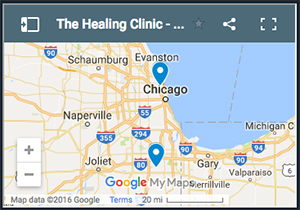Cannabis Vs Cocaine 2016 (Infographic)
Federal Classifications: Are they still relevant to what today’s research shows us?
Following the Controlled Substance Act of 1970, all drugs were classified as one of five different schedules. The higher numbers are meant for drugs with a low potential for abuse and with potential therapeutic benefits. Some might find it surprising, therefore, to learn that despite a growing number of states legalizing cannabis for both medical and recreational use, that it is still classified as a Schedule I drug, along with heroin and LSD. Meanwhile, cocaine is classified as a Schedule II drug, which means that according to the federal government, it has a high potential for abuse and physical dependence but also has acceptable medical uses in the U.S.
Due to the Schedule I classification of cannabis, it remains difficult for researchers to perform studies in order to fully understand it’s medical benefits. While plenty of anecdotal evidence exists around the therapeutic potential of cannabis, more research needs to be conducted in order to garner enough scientific evidence.
Medicinal Histories of Cannabis & Cocaine
We know what you are probably thinking and we too were stumbled by the fact that cocaine is considered to have medical value, so we did a little digging. According to Medicinenet.com, “cocaine acts as a local anesthetic by blocking conduction of nerve impulses and can be prescribed by physicians to be used as a local anesthetic in certain cases of eye, ear, or throat surgeries.”
Check out the following video by Dnews called Weed or Cocaine, What’s Worse For You?
It is well known that cannabis has been used for years to help cancer patients deal with pain, nausea associated with chemotherapy, anxiety and depression. A recent study has even found that certain compounds in cannabis may inhibit the growth of breast cancer cells. Several additional studies support these findings, including “Pathways mediating the effects of cannabidiol on the reduction of breast cancer cell proliferation, invasion and metastasis” and “Cannabinoids: a new hope for breast cancer therapy?” In addition, cannabis has proven to be an effective treatment for cervical cancer, melanoma, brain cancer, lung cancer and leukemia.
WebMD says that “cocaine increases heart rate and blood pressure while constricting the arteries supplying blood to the heart.”, which could cause death. Users of cocaine can also experience the inability to regulate body temperature. Countless studies have emerged showing that cocaine use can cause negative psychological effects as well. One study published in The Journal of Neuroscience found that cocaine addicts continue to use the drug despite negative consequences because it may actually impair the brain’s ability to predict emotional loss. In addition, cocaine use may alter a person’s ability to predict emotional loss.
So it seems research coupled with history has shown us the truth, that cocaine is a much more dangerous and addictive drug than cannabis. Cannabis has very significant medical benefits while cocaine has limited and very outdated medical uses, for which there are plenty more effective and non-addictive alternatives. So how can the government consider cannabis to be a more dangerous substance? Your guess is good as ours!
See below for more interesting information explaining the difference between the two.

Embed this infographic on your website
Like this post?
Comment below or share using the links below, and Happy Valentine’s Day!




